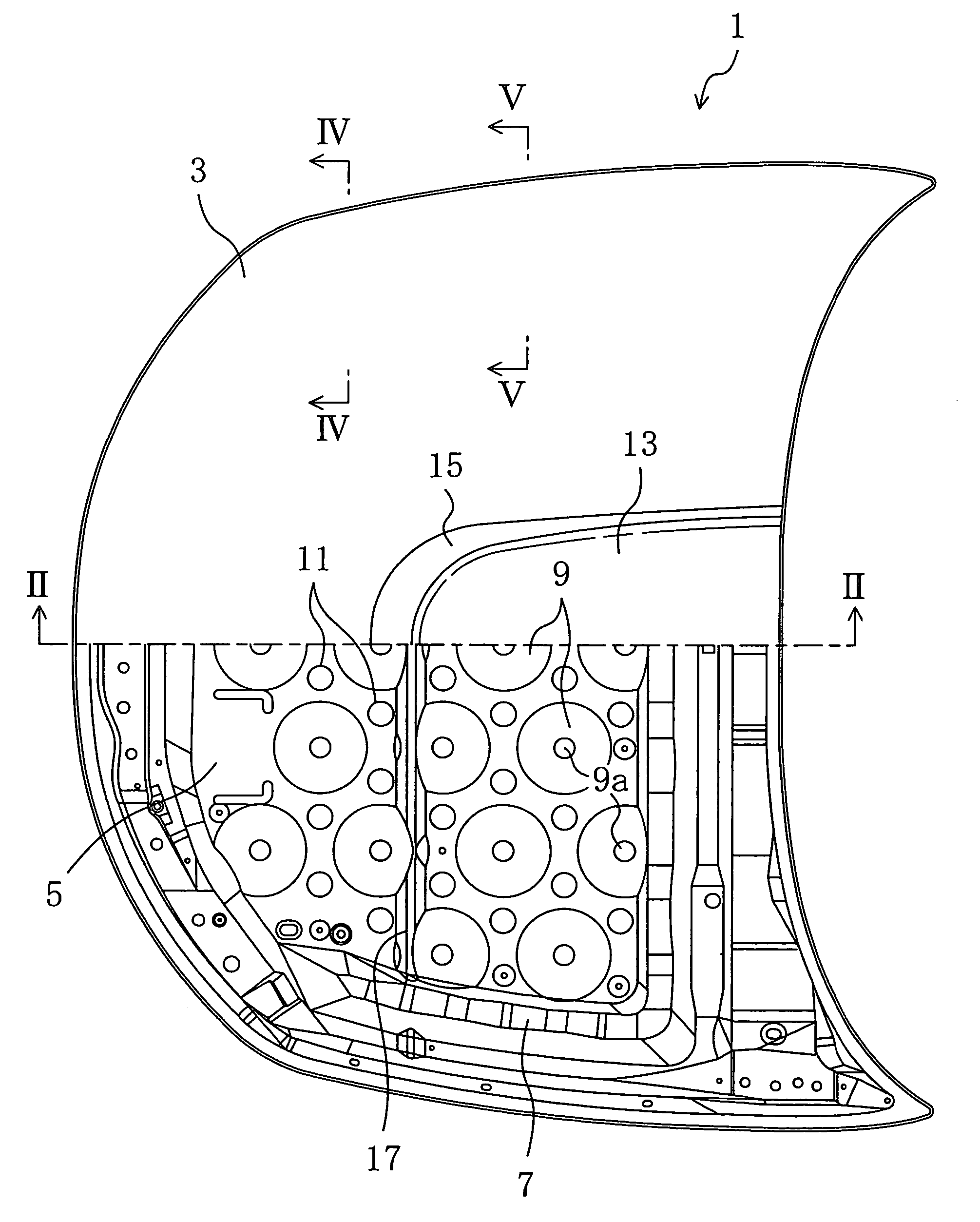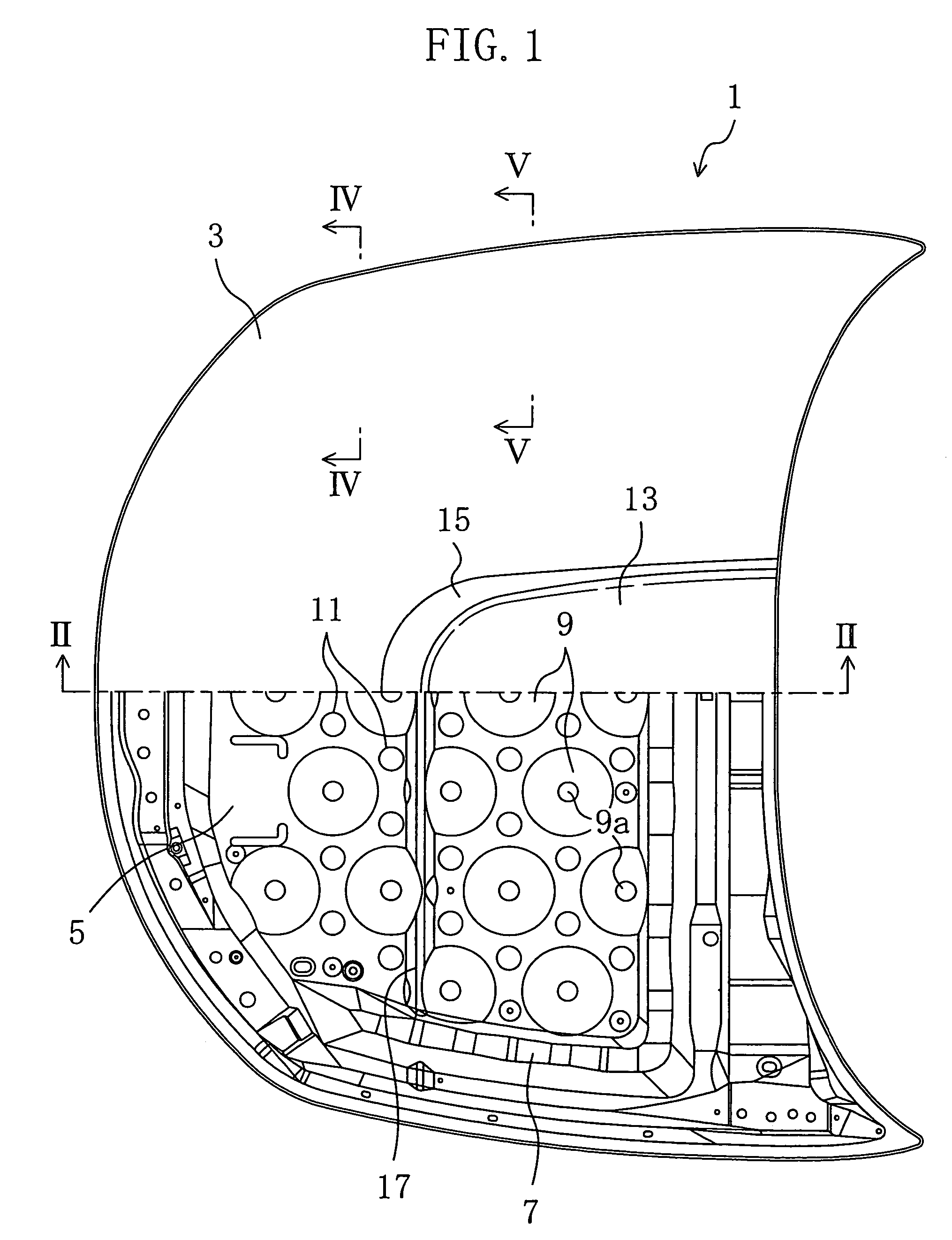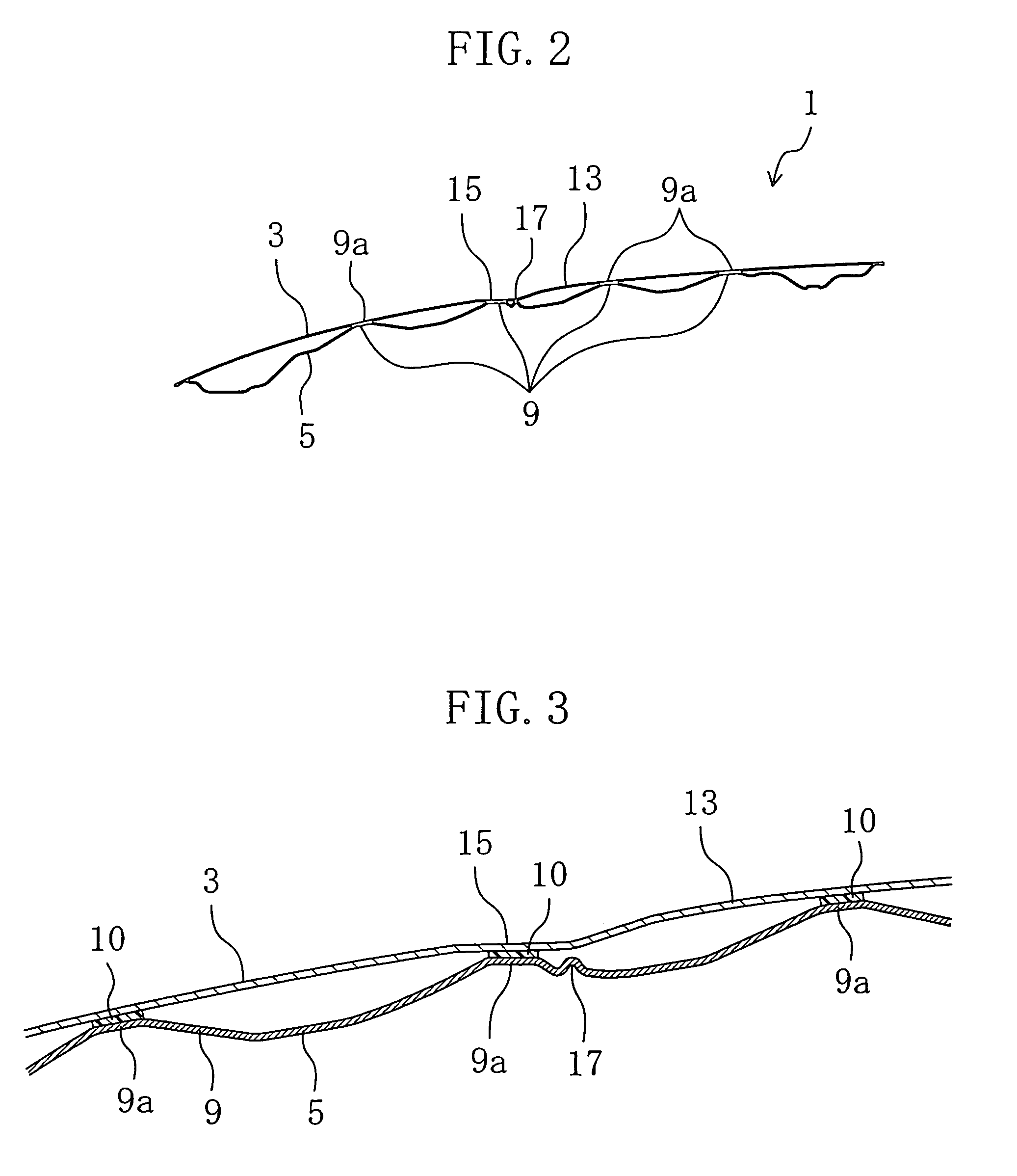Vehicle hood
a technology for vehicles and hoods, applied in the direction of roofs, vehicular safety arrangements, pedestrian/occupant safety arrangements, etc., can solve the problems of hindering the bending of the outer panel, pedestrians are greatly damaged if they are hit, and the hoods have a problem, so as to achieve the effect of increasing rigidity, low rigidity, and high rigidity
- Summary
- Abstract
- Description
- Claims
- Application Information
AI Technical Summary
Benefits of technology
Problems solved by technology
Method used
Image
Examples
embodiment 1
(Embodiment 1)
[0037]FIG. 1 shows a hood 1 which is a vehicle hood according to Embodiment 1 of the present invention. The hood 1 includes a hood outer panel 3 as an outer plate and a hood reinforcement 5 which is shaped to correspond to the shape of the hood outer panel 3 and bonded to the underside of the hood outer panel 3 with an adhesive 10. In FIG. 1, the hood outer panel 3 is partially cut away to show the hood reinforcement 5.
[0038]When viewed in plan, the hood 1 (the hood outer panel 3 and the hood reinforcement 5) has a convex form at the front end thereof for design purposes. That is, the front part of the vehicle is rounded.
[0039]As shown in FIGS. 2 and 3, the hood outer panel 3 and the hood reinforcement 5 are so arranged that space is provided between the underside of the hood outer panel 3 and the top side of the hood reinforcement 5. The front part of the hood reinforcement 5 bulges more downward than the other part to make the space at the front part larger than that...
embodiment 2
(Embodiment 2)
[0054]FIGS. 7 to 9 show a vehicle hood 1 according to Embodiment 2 of the present invention. The vehicle hood 1 of Embodiment 2 differs from that of Embodiment 1 in the positional relationship between the bend 17 of the hood reinforcement 5 and the bulge 13. In FIGS. 7 to 9, the same components as those shown in FIGS. 1 to 6 are given with the same reference numerals and a detailed explanation thereof is omitted.
[0055]Unlike Embodiment 1, when viewed in plan, the bend 17 of the hood reinforcement 5 extending in the vehicle width direction intersects the front part of the bulge 13. That is, the bend 17 and the bulge 13 are so arranged that the bend line 19 is formed along the bend 17 and the edge of the front part of the bulge 13 in a frontal crash.
[0056]In a frontal crash, the vehicle hood 1 functions in the same manner as described in Embodiment 1. The vehicle hood 1 is different from that of Embodiment 1 in that the hood outer panel 3 is bent in the front to rear dir...
PUM
 Login to View More
Login to View More Abstract
Description
Claims
Application Information
 Login to View More
Login to View More - R&D
- Intellectual Property
- Life Sciences
- Materials
- Tech Scout
- Unparalleled Data Quality
- Higher Quality Content
- 60% Fewer Hallucinations
Browse by: Latest US Patents, China's latest patents, Technical Efficacy Thesaurus, Application Domain, Technology Topic, Popular Technical Reports.
© 2025 PatSnap. All rights reserved.Legal|Privacy policy|Modern Slavery Act Transparency Statement|Sitemap|About US| Contact US: help@patsnap.com



